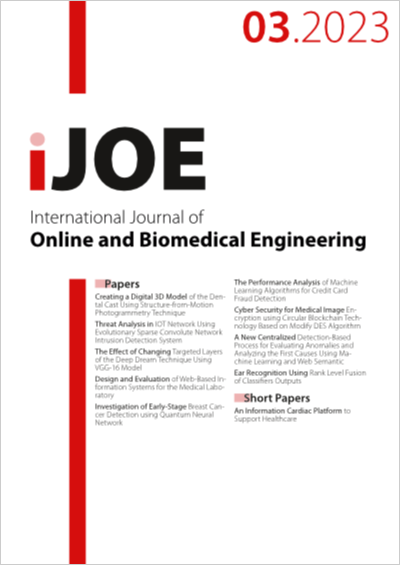Threat Analysis in IOT Network Using Evolutionary Sparse Convolute Network Intrusion Detection System
DOI:
https://doi.org/10.3991/ijoe.v19i03.37571Keywords:
Internet of Things (IoT); intrusion threats; Distributed Denial of Services; sparse convolute network; detection system, Statistical AnalysisAbstract
Internet of Things (IoT) played a crucial role in various sectors such as automobiles and the logistic tracking medical field because it consists of distributed nodes, servers, and software for effective communication. Although, this IoT paradigm suffered from intrusion threats and attacks that cause security and privacy issues. Existing intrusion detection techniques fail to maintain reliability against the attacks. Therefore, in this work, IoT intrusion threat has been analyzed by using the sparse convolute network to contest the threats and attacks. The network is trained using sets of intrusion data, characteristics, and suspicious activities, which helps identify and track the attacks, mainly Distributed Denial of Service (DDoS) attacks. Along with this, the network is optimized using evolutionary techniques that identify and detect the regular, error, and intrusion attempts under different conditions. The sparse network forms the complex hypotheses evaluated using neurons, and the obtained event stream outputs are propagated to further hidden layer processes. This process minimizes the intrusion involvement in IoT data transmission. The effective utilization of training patterns in the network classifies the standard and threat patterns successfully. Then the effectiveness of the system is evaluated using experimental results and discussion.
Downloads
Published
How to Cite
Issue
Section
License
Copyright (c) 2023 Alaa Q. Raheema

This work is licensed under a Creative Commons Attribution 4.0 International License.



